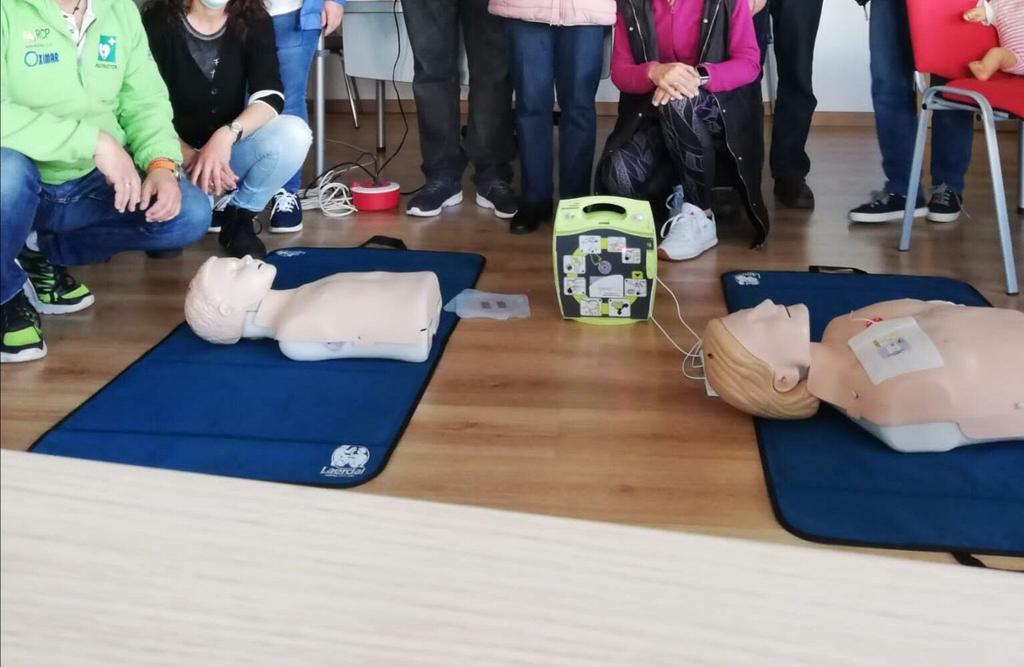The Alta Sanabria region is at the forefront in emergency care, making use of one of the tools most in use on our mobile devices: WhatsApp. Thus, following the pioneering idea that emerged in Galicia in 2017, TES experts and neighbors from across the county map have joined in a group with the aim of speeding up the response time to a possible heart attack or failure.
The group, made up of 38 inhabitants from different towns in the region, seeks to make the most of the training given by the Alta Sanabria Mancommunity itself – made up of four Town Councils (Hermisende, Lubián, Pías and Porto) and with a total of 15 localities – in CPR and first aid matters. In this way, all the members of the courses (most of them geroculturists and also educators) and trainers make up a group whose main objective is to warn of any type of urgency and to mobilize the experts who are closest to the point of incidence to act as soon as possible.
The trainers of the course, with the expert technician and TES instructor José Manuel Vega at the helm, are in charge of channeling all the information that passes through the group and that also intends to serve as a platform for updating information and action practices, thus continuing with the practical training given but already through online support.
The courses taught so far by the Commonwealth have consisted of theoretical-practical classes on cardiopulmonary resuscitation techniques and the use of defibrillation under the title “Basic Life Support and Semiautomatic Defibrillation”. In total, eight hours of training spread over a total of six courses – and new editions will soon be added from the agreement between the Red Cross and the Zamora County Council in Pías and Hermisende – so that users know the correct use of the 14 defibrillators – acquired by the Commonwealth – that are already hanging around the streets of practically all municipalities in the area. A team that has allowed the region to become a cardioprotected space.
“The idea is that if there is an emergency in one of the towns, it can be communicated through the group and if there is someone close to that point who can come until the toilets arrive,” explains José Manuel. A vital aid especially in the face of the end of the summer, when the region empties again after the end of the holidays, at which time the geographical dispersion greatly complicates rapid action, key to survival in the event of heart failure.

In any case, José Manuel emphasizes the importance that, whoever acts in the emergency acts, it is a priority to notify the Castilla y León 1-1-2 Emergency Center so that it can notify the nearest emergency team and at the same time guide the people who help the victim using defibrillators that are perfectly marked and stored in boxes on the public highway.
Although at the moment the group is made up exclusively of residents of the region who have received regulated training thanks to the Commonwealth, the group is open to receive anyone who has the relevant training, as long as they reside or travel regularly to the Shire.
– .


